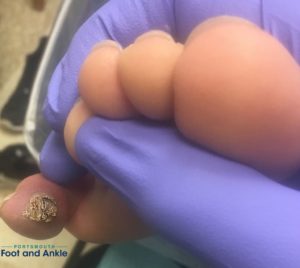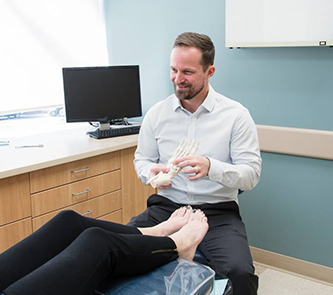Let’s Talk Plantar Warts
What You Need To Know About Plantar Warts

One of the most common complaints that walks through the door is “I think I have a plantar wart.”
In my own experience, this claim is accurate only a small portion of the time, however. There are many different differential diagnoses that could explain the lesion, but a few characteristics lead physicians to accurately diagnose plantar warts.
So, what is a wart anyways?
A wart is hyperplasia keratotic tissue caused by a virus. The virus responsible for plantar warts is called the Human Papillomavirus. There are multiple different subtypes of this virus, however there are a few subtypes responsible for these specific lesions. The virus finds its way through the outer layer of skin via a cut or opening in the skin. Once the virus finds its way through the skin, a verruca lesion will start to develop from the bottom layer of the skin and proliferate outward through hyperplasia of keratotic tissue. The development of this lesion could take weeks or months, however. Left untreated the lesion can cause spreading of more lesions, grow in circumference, or continue to grow in protruding fashion.
Defining Characteristics
- Small black dots within the lesion – These are referred to as “petechia” which are tiny blood vessels beneath the skin.
- Pinpoint bleeding – Another characteristic of verruca lesions is that when the outer most layer of skin is sharply debrided away from the lesion, one would note pinpoint bleeding.
- Disruption of skin lines – A wart develops from the base layer (or basement membrane) of the skin, and once it proliferates outward through the remaining layers of skin, it will eventually come through the top layer of skin where skin striae (skin lines on the soles of our feet, akin to lines that make up fingerprints on our hands) are observed. If skin striae are seen crossing over the top of the lesion, it is not a wart.
- Tenderness – Most often patients will complain of tenderness associated with the lesion, and painful to walk on.
Once the lesion has been accurately diagnosed, the correct treatment plan can then be pursued by the physician. The most common treatments offered here at Northeast Foot and Ankle include Cutera Laser (Laser Treatments) which uses heat to cauterize (kill) the virus and underlying blood supply to the lesion. This method often times may take between three and seven treatments before resolution of the lesion is noted. The Cutera Laser is not the best option for all lesions, however. Other treatments include topical agents, such as a Formalin solution or Salicylic Acid. The other option for persistent lesions is surgical excision of the lesion. The lesion pictured below was excised surgically.
If you are concerned that you may have a verruca lesion (wart), we recommend speaking with a podiatric physician for prompt and accurate diagnosis and treatment.
Pay Your Bill
Make a payment online through our payment portal or Care Credit!
Portsmouth Office
14 Manchester Square, Suite 250
Portsmouth, NH 03801
Nashua Office
17 Riverside Street, Suite 205
Nashua, NH 03062
© Northeast Foot and Ankle, LLC | Privacy Policy | Notice of Nondiscrimination | Terms & Conditions
Website Hosted by SC Digital
Website Hosted by SC Digital



